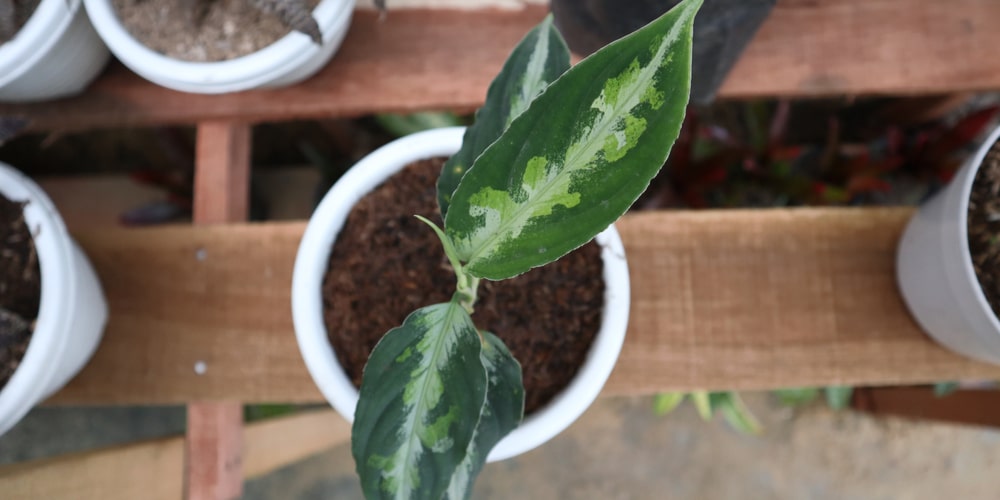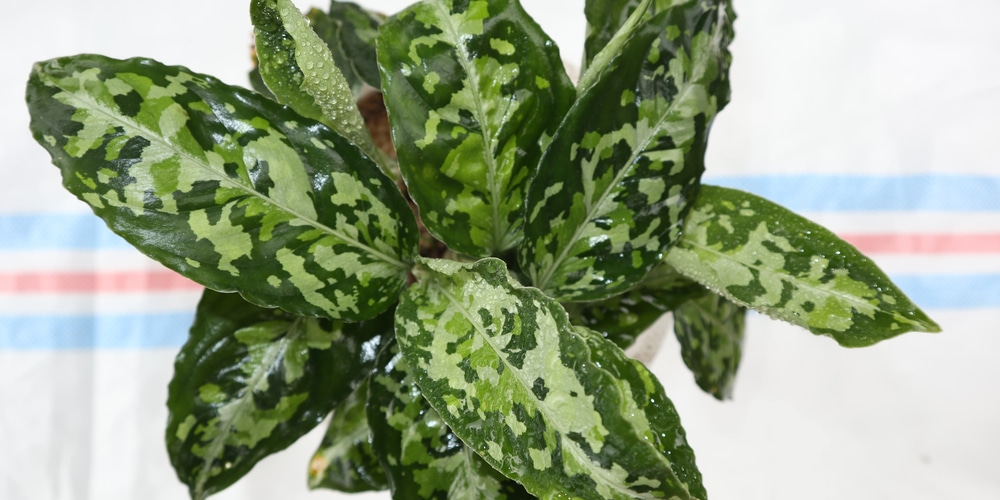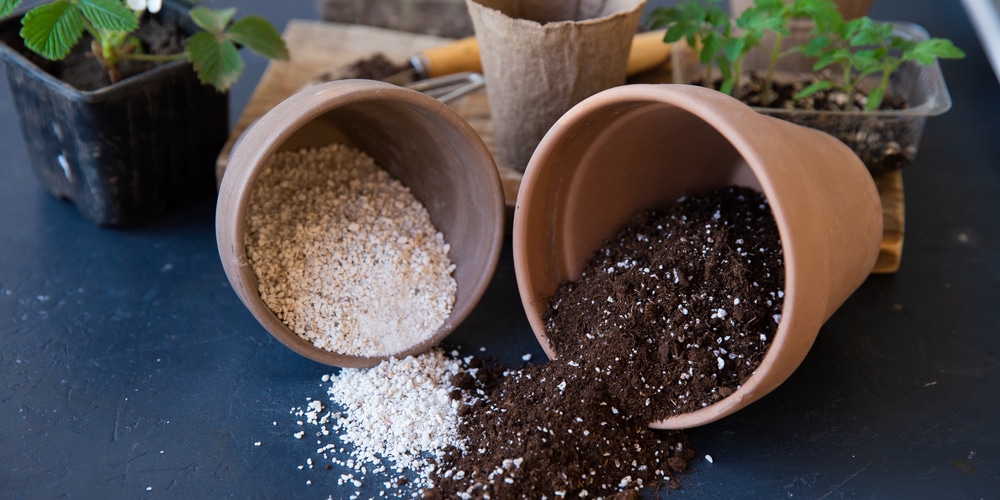Aglaonema pictum tricolor is a beautiful and striking addition to any home. With its variegated leaves in three shades of green, it’s hard to believe this plant is so easy to care for.
In this guide, you’ll learn everything you need to know about growing Aglaonema pictum tricolor plants successfully, from propagation tips to common care issues. So read on, and be inspired to add one of these amazing plants to your own home!
What is a Aglaonema Pictum Tricolor Plant?
The Aglaonema pictum tricolor is a medium-sized, herbaceous plant native to Southeast Asia. It’s found growing in Sumatra on volcanoes in Indonesia. These plants naturally grow at high altitudes and are relatively rare. It may be difficult to source an Aglaonema pictum tricolor plant.
These plants belong to the family Araceae and have variegated leaves in green shades that help the plant be camouflaged. The leaves are dark green, white and bright green. Its common name is Chinese evergreen tricolor, and it’s widely grown for its durability and beauty. These plants can be grown as houseplants and do well outdoors in tropical and subtropical regions.
The Aglaonema pictum tricolor plant has large leaves 4 to 8 inches long and 1.5 to 2.5 inches long. The plant will produce a single spadix with white to greenish unisex flowers during the spring and summer months. These plants also have red or yellow berries after blooming. The Aglaonema pictum tricolor plant is an evergreen that can grow to a height of about two feet.
How to Care for a Aglaonema Pictum Tricolor?
Aglaonema pictum tricolor is an easy-to-care houseplant. As long as you’re careful to keep your plant at room temperature with moist soil, your plant should remain healthy for many years. Here are some tips to help you grow a thriving Aglaonema pictum tricolor plant:
Temperature
Aglaonema pictum tricolor prefers room temperature, around 65 to 75 degrees Fahrenheit. They don’t tolerate colder temperatures well and may go dormant if the temperature stays below 50 degrees for a few days in a row.
If you’re growing your plant indoors, be sure to move it away from cold windows or doorways where it might experience a chilly draft. If your plant is in a draft consistently over a few days, your plant may go dormant.
Sunlight
Your aglaonema pictum tricolor will thrive in bright filtered light but not direct sunlight. Try placing it next to a south or west-facing window for the best results. If you don’t have a spot that gets enough bright indirect light, use fluorescent grow lights.
Water
Your plant thrives in moist soil when it’s actively growing but shouldn’t be kept too wet. Keeping an aglaonema pictum tricolor in moist soil can lead to root rot or fungal infections. As Aglaonema pictum tricolor plants originate from a tropical climate, they are fairly drought resistant.
Nutrients
Feed every one to two months with a balanced liquid fertilizer. If you notice that new growth is smaller and lighter in color or the older leaves are becoming yellowish, it’s time to fertilize your plant.
Soil
A combination of peat moss, vermiculite, and sand works well for indoor plants. The soil should be well-draining and loose, as well as rich in organic matter and nutrients. Avoid clay-like soils or soil that is compacted. Make sure that the pot has holes in the bottom to avoid drainage issues that may result in root rot. The soil’s pH range should be slightly acidic and between 5.5 and 7.0.
Humidity
Keep the humidity around your plant between 40 and 60% by using a room humidifier or placing pebbles in a tray filled with water. You can also try misting your plant daily.
Pests
Aglaonema pictum tricolor plants can be affected by common house plant insects. Pests such as mealybugs, spider mites, and aphids will suck the plant’s sap. Infestations can be dealt with using either neem oil or an insecticidal spray.
When to Repot an Aglaonema Pictum Tricolor?
Aglaonema pictum tricolor may be repotted annually before spring for propagating purposes. Otherwise, report in spring or fall every 3 to 4 years. If you notice your plant is growing several shoots from the same root system, consider dividing it into several smaller plants, which make great gifts for friends and family.
How to Propagate a Aglaonema Pictum Tricolor?
While most varieties of aglaonema are propagated with stem cuttings, you can also propagate tricolor varieties by division. Another way to grow a new plant is to collect the seeds after flowering and plant them in the following spring.
Division tips
To do this, simply divide the plant into several smaller plants with some stem and leaf nodes intact using sharp, clean shears or a knife.
This process is called “division” because you’re actually dividing the mass of roots and soil found on top of the rhizome into equal masses for each individual plant. Be sure to spread the roots for each division apart with your fingers before putting them in a small container, then water well.
How to propagate with stem cuttings?
To propagate via stem cutting, wait until your plant has reached maturity, then take a healthy cutting. Always use sterilized scissors to cut plants as this will keep your plant healthy and avoid the spread of infection.
Once you’ve taken a cutting, you can place it in a glass of water for a couple of weeks until roots begin to form. Change the water every couple of days to keep it fresh while waiting for roots to grow.
After roots have emerged, you can plant your cutting in a good quality potting compost. Look after your plant by watering it regularly and ensuring that it’s getting enough sunlight.
Conclusion
The Aglaonema pictum tricolor is a beautiful plant that will grow larger every year if cared for properly. With a little know-how and some tender loving care, it can brighten up your home for years to come.
You may also want to check out the Aglaonema cutlass if you are looking for a larger Aglaonema with lighter leaves. Aglaonema Emerald Beauty lives up to it’s name, as it has a beautiful zebra-like leaf pattern.


